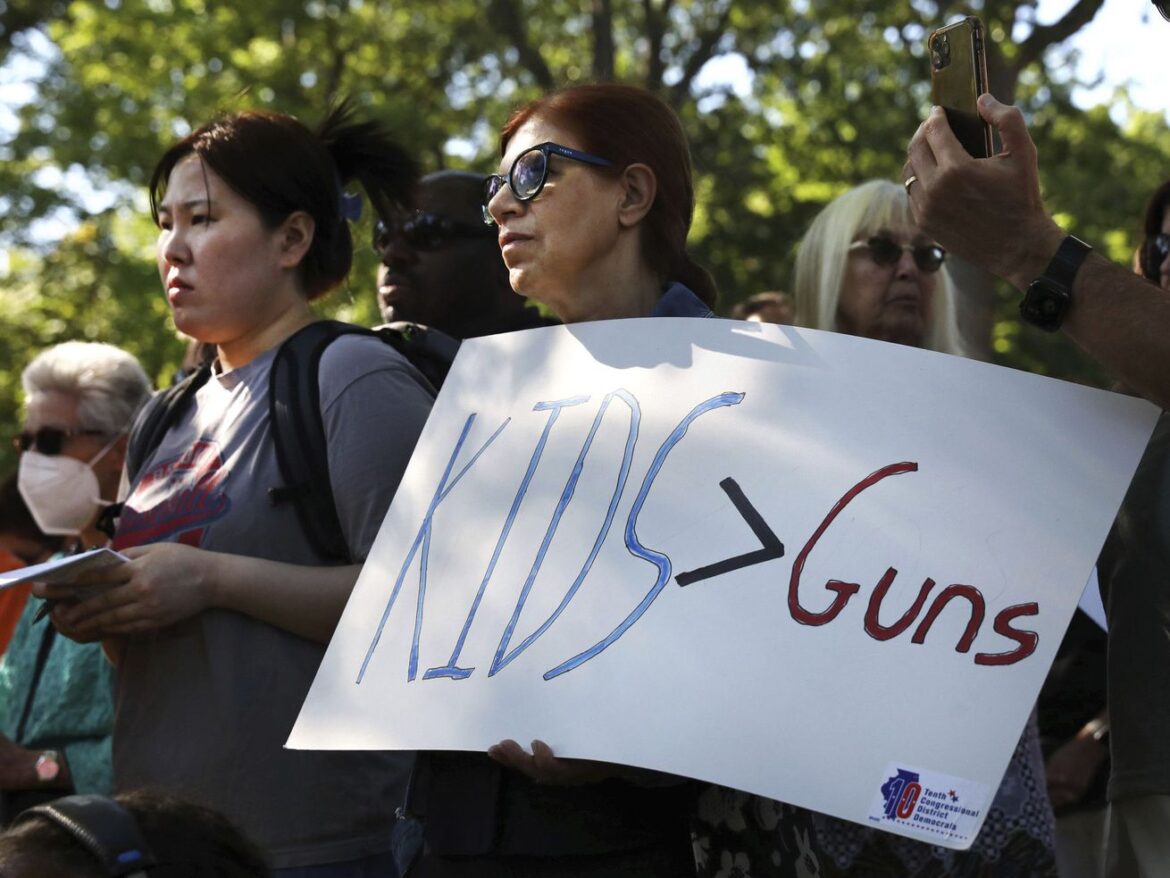A shooting at a Texas prom party highlights the huge toll of gun violence on kids and teens in the US.
Nine teens were injured in a shooting at a large after-prom party near Jasper, Texas, just after midnight Sunday. Authorities have not identified the shooter or their motive, but said they were questioning people of interest in the case. None of the nine victims at the party, which was attended by about 250 people, suffered life-threatening injuries, but many were transferred to nearby hospitals for treatment.
It’s one of several recent shootings involving children and teens. In just the past month, two teens were killed and at least another 15 were treated for gunshot wounds in a mass shooting at a 16th birthday party in Dadeville, Alabama. Ralph Yarl, a Black 16-year-old, was shot in Kansas City after accidentally going to the wrong house while trying to pick up his younger brothers. And two teenage cheerleaders were shot after mistaking a car for their own in a supermarket parking lot in Austin, Texas.
It follows the March mass shooting at Covenant School in Nashville, Tennessee, in which three children were killed.
The Jasper school district said in a statement that it would assist in the police investigation and maintain a bigger law enforcement presence on campus this week “to ensure student safety,” as well as make counselors available to students.
The Jasper shooting is a reminder that gun violence has become the leading cause of death among children and teens, making up 19 percent of deaths for individuals ages 18 and younger in 2021.
Young people in the US are uniquely at risk of gun violence
In 2020, gun violence surpassed traffic accidents, cancer, suffocation, and poisoning as the leading cause of death among children and teens. That makes the US exceptional: In no other wealthy or similarly sized country is gun violence one of the top four causes of death among children and teens, let alone the leading one, according to a 2022 analysis by the Kaiser Family Foundation. That analysis also showed that the US accounts for 97 percent of all child and teen firearm deaths among its peer countries.
Most of those US deaths are caused by assault, with 3.6 children and teens per 100,000 dying on that account in 2020. By comparison, 1.7 and 0.3 per 100,000 children and teens died from firearm suicide and unintentional or undetermined firearm-related causes, respectively.
Children and teens in the US also experience ongoing secondary effects from gun violence, even if they are not injured in a shooting. Researchers at Penn Medicine found in a 2021 study of more than 2,600 shootings that there was a significant spike in emergency department visits for mental health issues among children after neighborhood shootings, with the most acute effects observed among children living closest to the site of the shooting and those who have witnessed multiple shootings.
How to reduce the toll of gun violence on young people
Many of the proposed ways to reduce gun deaths among young people are the same that are aimed at reducing gun violence overall. President Joe Biden has recently called for a national assault weapons ban and a ban on high-capacity magazines, establishing universal background checks, and removing gun manufacturers’ immunity from liability.
But there are a few policies that are specifically designed to shield children and young people from gun violence. Safe storage laws can help address accidental and self-inflicted gun injuries and deaths among children and teens. Eight states and Washington, DC, have laws requiring that owners secure their firearms, and another 15 states have child access prevention laws, which typically hold someone liable for failing to secure their firearm if a child is able to access it.
According to the advocacy group Everytown for Gun Safety, “households that locked up firearms and ammunition were associated with a 78 percent lower risk of self-inflicted firearm injuries and an 85 percent lower risk of unintentional firearm injuries among children and teens” compared to households that didn’t do so. And if only half of the households that don’t currently lock up all of their guns started doing so, that would prevent an estimated one-third of youth gun suicides and unintentional deaths.
Laws that raise the minimum age to own a firearm above the federal requirement — which is 18 to buy a long gun, including a rifle, and 21 to buy a handgun — can also help reduce firearm suicides, which have increased 41 percent in the last decade among people ages 18 to 20.
Those laws can also prevent teens from committing crimes with guns. It’s not clear how old the shooter at the Texas after-prom party was. But in some of the recent shootings involving teens, the alleged perpetrators have been young people themselves. That includes the six individuals arrested and charged with reckless murder in the Dadeville shooting, who were all between the ages of 15 and 20.
Research has repeatedly shown that criminal activity increases throughout teen years, reaches its highest point at age 17 — the oldest that someone can be charged with a juvenile crime — and subsides thereafter throughout life. People age 18 to 20 commit gun homicides at triple the rate of older adults. And according to data from the National Institute of Justice, the 168 total mass shooters between 1966 and February 2020 were on average 34 years old, and 15 of them were children and teens.



